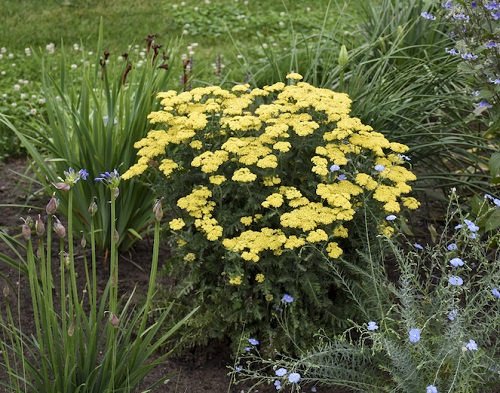Don’t skip these Herbs to Plant with Vegetables to get the most out of your produce and enhance flavor!
The best-kept secret to getting your vegetables’ flavors popping and boosting harvest is planting them with herbs! Think of them as the friendly sentinels of the plant world. Herbs deter unwanted pests, improve taste, and provide their veggie BFFs with easy nutrition.
We’ve curated the best companion planting list of vegetables and herbs, so you get a great harvest of both with minimal care!
Herbs to Plant with Vegetables
1. Comfrey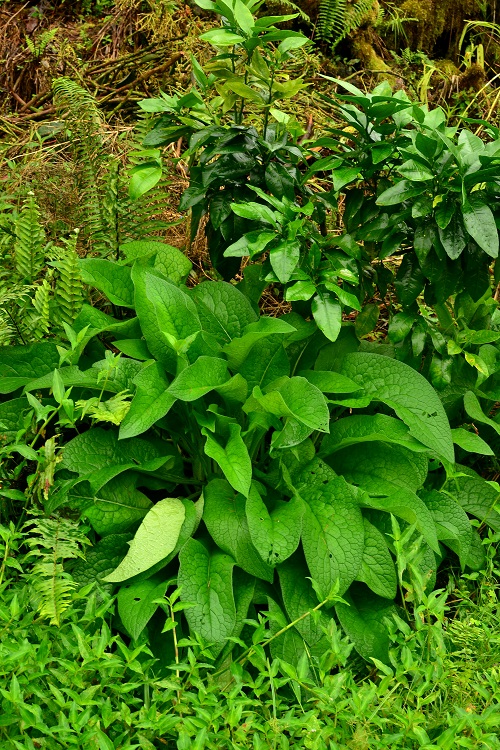
Botanical Name: Symphytum officinale L.
Comfrey goes well with tomatoes, peppers, cucumbers, and fruits like peaches and pears. The leaves of this fast-growing perennial herb have balanced nitrogen, phosphorous, and potassium levels. And when they fall and decompose, their neighboring plants enjoy a slow release of these essential nutrients!
This pollinator magnet also brings nutrients to the surface, kills weeds, and, when used as mulch, adds ample organic matter to the soil, all leading to a bountiful harvest of vegetables!
2. Basil

Botanical Name: Ocimum basilicum
No list of herbs to plant with vegetables is complete without basil! This fresh, fragrant herb is excellent to plant with vegetables like tomatoes and peppers, root veggies like radishes, turnips, carrots and beets, and asparagus. Universally loved for its own flavor, it also helps improve the taste of the vegetables it accompanies!
And its strong aromatic oils help keep away aphids and whiteflies. It also attracts beneficial insects like ladybugs and hoverflies, which snack on other pests, protecting your veggies.
Read here to grow basil indoors all year round.
3. Chives
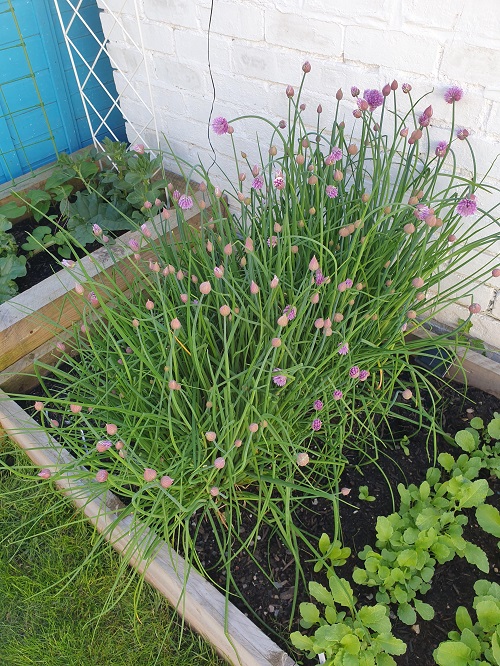
Botanical Name: Allium schoenoprasum
Chives are excellent at repelling pests like spider mites and rust flies, which often affect veggies like celery, lettuce, peas, carrots, cabbage, broccoli, kale, and grapes. This edible herb with a mild onion-garlic flavor grows well in full sun and partial shade.
With blooms throughout the growing season, chives also attract pollinators. Check out our guide to growing Chives.
4. Dill

Botanical Name: Anethum graveolens
If you want to improve the health and growth of your cabbage family (brassicas) plants, grow them alongside Dill. This fresh and tangy herb also pairs well with lettuce, onions, and cucumbers, making it a crucial herb to plant with vegetables.
Dill’s feathery green leaves attract beneficial insects like ladybugs, hoverflies, and predatory wasps, which help control pests that can damage these vegetables.
5. Borage
Botanical Name: Borago officinalis
Borage is a herb that you can plant with vegetables for double benefits. Yes, they attract pollinators to help improve yields, but that’s just one thing. Borage also absorbs nitrogen from the air, which is a crucial nutrient for plant growth.
It works like a tiny nitrogen factory and helps enrich the soil–making your produce healthier. Brassicas, beans, and squashes are all good companions for borage.
6. Mint

Botanical Name: Mentha
Mint pairs effectively with cabbage, tomatoes, and peas, where its ability to repel cabbage moths, aphids, and flea beetles helps keep these vegetables pest-free. It’s also great for keeping carrot root flies away and supporting the healthy growth of this root vegetable.
People also use this herb as a natural way to keep away garden moles—the scent irritates them. But mint is quite an aggressive grower, so it’s best to grow it in a pot and keep it where you’ve planted the vegetables so it doesn’t overcrowd and ruin the produce.
7. Oregano
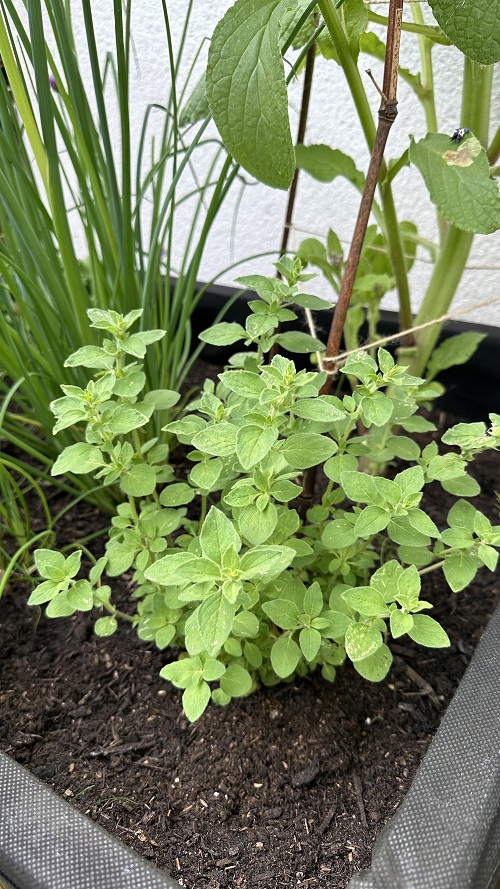
Botanical Name: Origanum vulgare
Oregano is a hardy herb that can be grown with various vegetables without affecting their health. If you ask about vegetables to grow with this herb, go for tomatoes, peppers, and eggplants.
Some studies have suggested that oregano and mint can aid tomato tolerance against soilborne diseases. Plus, these two herbs can help grow taller and thicker tomato stems.
8. Parsley
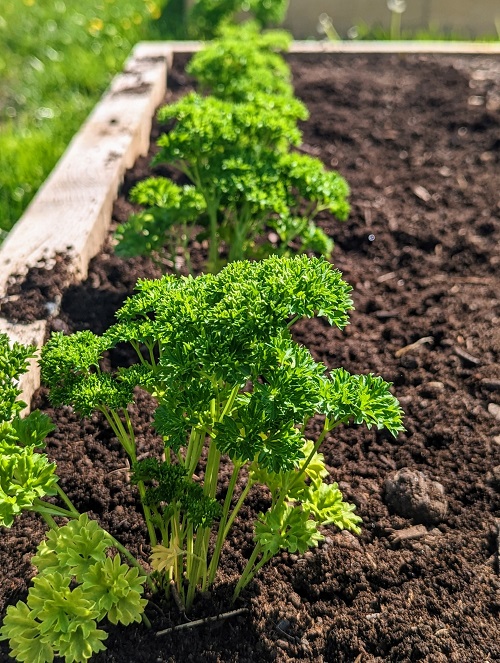
Botanical Name: Petroselinum crispum
Asparagus, corn, tomatoes, peppers, carrots, onions, beans, brassicas, apples, pears, and even roses benefit from having parsley as a friend. This nutrient-rich herb deters pests like cabbage worms and hornworms. It attracts insects like ladybugs, bees, hoverflies, and useful wasps, which feed on annoying pests.
The stunning swallowtail butterfly also loves this herb and lays eggs on it!
9. Yarrow
Botanical Name: Achillea millefolium
Yarrow is a pretty herb with lacy leaves that improve soil fertility, thus boosting harvest. However, yarrow requires a little extra effort. You can’t just plant it and expect instant results!
Yarrow is called a “compost activator” because it speeds up decomposition, breaking down organic matter quickly. Add a handful of chopped yarrow leaves into your compost before adding it to the soil. Its leaves are also rich in sulfur, copper, and other micro-nutrients veggies need.
10. Rosemary
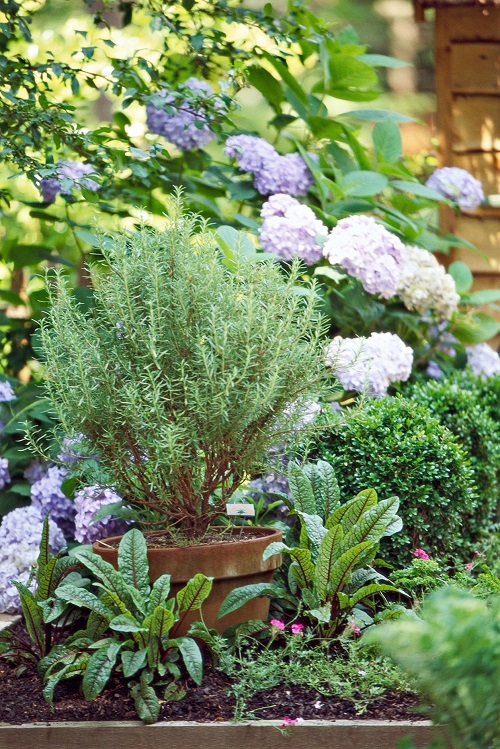
Botanical Name: Salvia rosmarinus
While cabbage is often suggested as a great Rosemary companion, vegetables prone to fungal disease and that need more moisture are not the best pairings with this aromatic herb. Its strong scent repels cabbage moths, bean beetles, and carrot rust flies, which also attack brassicas. Go with carrots, beans, peppers, and parsnips instead.
Both rosemary and these companion plants prefer well-drained soil and full sun, which makes them compatible in the garden. Plus, rosemary’s woody stems can also provide structural support to sprawling plants.
11. Thyme

Botanical Name: Thymus vulgaris
Thyme is an aromatic herb that complements brassicas, tomatoes, eggplants, potatoes, and strawberries. It effectively repels cabbage worms, whiteflies, and hornworms while attracting beneficial insects like predatory wasps and suppressing weeds.
Thyme is rich in thymol oil, an antimicrobial that helps protect its neighbors from fungal diseases like bacterial wilt.
12. Marjoram
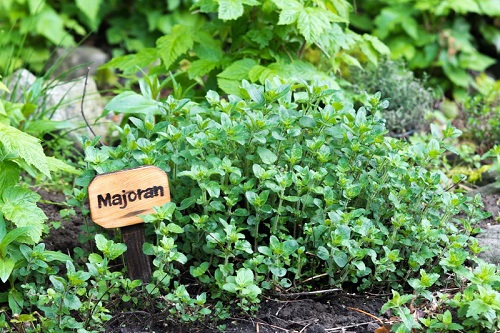
Botanical Name: Origanum majorana
We’ve been saving the best one for the last because you can pair marjoram with celery, eggplant, onions, brassicas, corn, radishes, tomatoes, peas, potatoes, and even other herbs like basil, chives, oregano, sage, and lavender. Here’s how to grow it.
While its aromatic leaves repel aphids, cabbage moths, carrot flies, and beetles, marjoram also helps improve soil, and its aromatic oils can enhance the flavor of your neighboring carrots, tomatoes, and peppers.
Companion planting is really the key to natural and safe edible gardening. With several herbs pairing well with each other, you can build an herb fortress around your veggies and watch the magic unfold!
Also, check out these 12 flowers that pair well with herbs. And don’t forget to share your experience in the comments.



